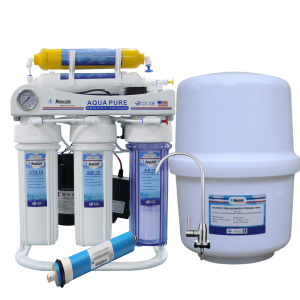Water is the source of all life. The entire ecosystem depends on water to thrive. It is necessary for bodily energy, proper digestion, nutrient absorption, and many other vital body processes which help us feel our best, most energized selves. And as part of this ecosystem, we need to be accountable for our water consumption and the small ways in which our habits and routines can have a positive impact on the environment.
How is water mostly consumed?
One of the ways how water is consumed is in plastic bottles which take [AR1] roughly about 450 years to decompose, making it an unsustainable option if we want to protect the environment. The reason many people buy plastic water bottles is that they believe that water is cleaner. And in many cases, this is true, because water is professionally filtered, ensuring its quality and superior taste.
Other times, however, bottled water is tap water, and you will just end up paying for the plastic packaging, despite its questionable quality. This is where water filtration comes in. Water filtration is a process in which water is cleaned of various chemicals that are harmful when ingested. Professional water filter systems ensure that the water you are consuming is up to par with the health regulations and standards (and with the requirements of our taste buds!). When you use a filtration system, you remove the need to constantly buy new plastic bottles and reduce the use of plastic bottles and other plastic containers.
Effects of water on food taste
If you’re not yet convinced, you should know about the use of water in cooking. We use water in different recipes, and the lack of different minerals and chemicals in filtered water lets the flavor of each ingredient shine on its own, without being overpowered by the metallic taste of unfiltered tap water. Chefs have especially noticed that water filtered with a
reverse osmosis filtration system makes for tastier food since it does not have minerals or added fluoride.
If you’re thinking tap water is fine, we hear you. And in a lot of cases, it can be ‘
fine’. But ‘
fine’ does not mean ‘
ideal’, especially with today’s waning safety and health regulations. Although our water and our pipes have to meet specific rules to ensure they’re up to health standards, the government -despite their best interest- cannot routinely check and maintain the quality of pipes to ensure that they are not carrying any nasty, harmful chemicals. Investing in a good water filter can ease our worries regarding this, removing harmful substances and ensuring we have safe, drinkable water.
Before making your choice for a water filter, however, you need to review all of your options.
There are five different water filtration techniques or systems:
- Mechanical filtration – a filter that can range from a simple mesh that filters out large chunks of debris to a more complex filter that filters even the smallest harmful organisms in the water.
- Absorption filtration – basically means that the filter contains granular activated carbon, which reduces unwanted tastes and odors by absorption. Because of its internal, mesh-like surface, carbon is great for gathering unhealthy chemical bits out of the water.
- Sequestration filtration – is when a substance is chemically isolated, mostly through polyphosphate. This type of filtration is rarer and only recommended in very specific circumstances (for example in water areas with 180ppm or more levels of alkaline)
- Ion exchange filtration – is used to exchange the ions in water (like magnesium, and calcium) with other ions such as sodium or hydrogen ions. This is best used when water must be kept at a high temperature, like at a café where it is needed to make coffee.
- Reverse osmosis filtration – also known as RO is a type of filtration technique used to remove most of the contaminants (also known as the tiny unhealthy scraps you cannot see with your eyes) from water by pushing it under pressure through a semipermeable membrane.
Every person or household has its own needs and preferences when it comes to filtered water, so there is no one-size-fits-all solution. Instead, you must do your research and make an informed decision when investing in a filtration system. And remember, this is not just an individual decision, but one that affects our world at large and helps our environment thrive.

